- Home
- Isaac Hooke
Worlds at War (A Captain's Crucible Book 5) Page 13
Worlds at War (A Captain's Crucible Book 5) Read online
Page 13
“The CDC hasn’t reported any communication-grade gamma rays yet,” Lewis said.
“Maybe we’ve damaged their comms?” Robert asked.
“It’s possible,” Jonathan said.
On the tactical display, scavenger ships began to pull away one by one.
“What’s going on?” Jonathan said.
“The scavenger ships are retreating toward the Elder vessel,” Lewis said. “And... the mothership is leaving orbit!”
“You think we’ve driven them off?” Robert said.
“No,” Jonathan said. “I think they’re merely retreating to lick their wounds. Ops, do you have a course for them yet?”
“Yes,” Lewis replied. “They’ve already moved beyond escape velocity. It seems their Alcubierre drive is fully functional, despite the damage we’ve caused. They’re headed directly away from us. If they continue upon their current trajectory, they’ll eventually reach Jupiter.” She paused. “The super-suits are breaking off their pursuit of the fleet as well.”
“Should I recall the Avengers?” Miko asked.
“Not yet,” Jonathan said. “Let them at least try to complete their mission.”
“More scavengers are leaving Earth orbit,” Lewis said.
“Do we have a trajectory on them?” the captain asked.
“Yes,” she said. “They’re headed toward the Elder as well. This is interesting: as they reach the Elder mothership, they plow directly into the breached portions of the hull.”
“Plugging the breaches with their ships?” Miko asked.
“Could be,” Jonathan said. “With those nanobots they have aboard, they might just need the raw materials. Miko, based on their current speed, is there any way we could intercept the Elder mothership? To finish them off before they complete repairs?”
“Negative,” Miko said. “At their current speed, we’ll never catch up to them, nor will any of our weapons.”
“Too bad,” Jonathan said. “Ops, update me on the scavengers remaining in orbit.”
“Most of them are descending deeper into the Earth’s atmosphere,” Lewis said. “Initiating atmospheric entry. Only twenty are staying in orbit. I’m guessing to guard the ones below from us.”
A few moments later Jonathan asked: “Have they finished their atmospheric entry yet?”
“They have,” Lewis said. “They’re all hovering about a hundred meters above the surface in different locations. Firing their gravimetric beams into the crust.”
“Trying to finish what the Elder started?” Jonathan asked.
“I don’t think so,” the ensign said. “It looks to me more like they’re collecting raw minerals from the Earth’s crust. Maybe gathering repair materials for the Elder.”
“All right,” Jonathan said. “Turn the fleet around. We’re going to be making a few orbital attack runs over the next several hours. Let’s see if we can disrupt some of that mineral farming.”
twenty
Rade felt the alien street shudder beneath his feet. The effect was enhanced slightly by the boots of his strength-boosting jumpsuit to make certain he was aware of it. He supposed that was the planet killers striking the ship. This despite the reassurances the SCS agent gave that they’d be well off the ship by then. Well at least they had survived the detonations. Though Rade wasn’t sure if that was good or bad for the rest of humanity.
A distant wail sounded a moment later. It reminded him of the pitch-changing siren he had heard during the invasion of the Elk homeworld. A ghostly, haunting noise. It heralded death, either for those who dwelt there, or for Rade and the boarding party.
He was aboard the Elder vessel, of course. Porting a nuclear bomb with his LPO Helium, and six combat robots. The sketchy SCS operative Vance led the way in his spacesuit. Vance held a blaster in one hand, and a gray, spherical device in the other. Strapped to his hip was a small, wicked-looking cylinder. The latter was probably an energy spear, Rade thought: a device that shot out a continuous stream of plasma when activated. It could be used like a laser cutter to pierce hatches and other doorways, or as a weapon.
The robots were equipped with laser rifles, and wore spacesuits like everyone else. All of the suits had been equipped with experimental charged field tech designed to repel any nanobots that might attempt to change the molecular structure of their suits. They had to lug around heavy power sources on their backs because of that, requiring them to leave behind their jetpacks for the mission. Rade couldn’t actually tell if there were any nanobots out there attempting to attack his suit, but nothing had happened so far so he assumed the tech was working.
They were on a street of some kind. That was the best way to describe it. Around them towered tall buildings. They were similar to those he had encountered on the Elk homeworld, in that the different buildings were geometric in shape—flat triangles, cylinders, pyramids—with black tubes interconnecting them. That, combined with the metallic gray-green sheen of the street led to the overall sensation of walking through a giant circuit board. And while the buildings were far taller than those Rade had encountered on the Elk homeworld, he could definitely see that the Elder and Raakarrr shared a common ancestry.
White filaments embedded in the buildings like veins in marble shone brightly, illuminating the street. Large sections of the neighborhood were coated in a gelatinous yellow-orange substance, which hung like a thick spiderweb upon and between the buildings. Vance gave those sections a wide berth.
Rade was convinced it was an alien city or colony. Perhaps the Elder didn’t build colonies on actual planets, but rather, their whole ship served as one.
Rade had been aboard the Dragonfly only five minutes before, coming in close to the twisting hull that turned back in upon itself. The Elder ship was slightly translucent near the upper regions, and even then he had caught glimpses of the apparent cityscape that awaited within.
They had flown underneath, along the outer rim of the Möbius strip, where several small openings dotted the surface. Like the suits the landing party wore, the Dragonfly had been equipped with the same charged field as the planet killers: designed to protect against the nanobot particle beam the Elder vessel employed. But the Elder never fired the beam against them, oddly enough.
Vance steered the Dragonfly into one of those openings, entering a tubelike corridor capped by a sealed hatch.
“I just detected a spike in gamma radiation,” one of the combat robots in the shuttle informed him at the time, using the private comm band that Rade had set up to exclude Vance.
“From the shuttle?” Rade asked.
“Yes,” the robot replied. “Or rather, inside.”
Rade glanced at Helium, who shrugged and said: “The crazy dude got the chief weapons engineer to give him some extra gear, I’m guessing.”
The hatch opened a moment later. How the operative had known to send such a transmission, Rade had no idea.
The Dragonfly entered what looked like some sort of hangar bay or small staging area. Empty super-suits lined the far bulkhead inside sealed glass pods. The shuttle dropped suddenly as it penetrated the artificial gravity field of the interior, but the external thrusters quickly compensated.
Rade had felt the increased weight immediately. According to his HUD, the gravity came in at one point four Earth Gs. A little on the heavy side, but nothing the enhanced strength of his jumpsuit couldn’t handle. Still, it only made the power supplies they wore on their backs feel all the heavier. Not to mention the warhead they would port.
The shuttle landed as the hatch sealed behind them and the bay apparently re-pressurized.
The down ramp opened; the two MOTHs and six Centurions scooped up the nuclear warhead and followed Vance into the staging area. He led them to another sealed hatch and held up a small spherical device—the same device he had kept in hand since then.
“Detecting another gamma transmission,” one of the faithful robots in the party told Rade.
That hatch opened, too. Then they walked ins
ide, entering the shipboard alien city.
And here they were.
Rade listened to his own soft breathing inside his helmet. The noise canceler reduced the sound of his respirations to a gentle whisper; the sound comforted him, somewhat. Told him he was still alive, at least for the moment.
He had to volunteer for the mission, of course. He had told his daughter he would be the first in line when it came time to pay the price for what they had done to the Elk homeworld. This mission certainly qualified. He didn’t expect that he or Helium would get out alive, despite the assurances that Vance gave them.
He glanced at the nuke whose handle he held with both gloves. He had come to pay the price for destroying the Elk homeworld; ironic, that the price would involve him giving his life to harm another colony world, one that resided aboard a ship instead of a planet.
His gaze drifted to Vance at the front of the party. Rade wouldn’t have come along if Maxwell hadn’t vouched for the man. When the AI of your ship is opening every door in your path and providing access to all the material you need for the mission, it’s hard not to believe the man you’re following is who he says he is.
Still, there was something off about him. Vance was far too calm and at ease for someone who was venturing deeper into an alien vessel. Like he knew things about it that no human should. Sure, he was SCS, but Rade doubted even the SCS knew very much about the Elder.
And then there was the way he looked at Rade, like he had known him for a long time, or at least, known about him. Rade suspected Vance had used his classified access to read Rade’s whole file. Helium’s, too. And from the way he acted, Rade definitely got the impression that Vance saw him and Helium as mere tools, nothing more. Expendable ones. Rade had no doubt Vance would throw them to the dogs the moment things got tough.
Rade felt the strap of his laser rifle pull slightly on his arm assembly as the weapon swayed with each step. Those laser rifles were equipped with the same tech the chief scientist had developed to penetrate the Raakarr darkness generators, except tweaked for the super-suits employed by the Neanderthals who appeared to be in the Elder’s service. In theory, it should penetrate the shielding mechanism of those super-suits. The weapons had never actually been tested against them, of course.
Rade had to smile at that.
How many times have I been used as the navy’s guinea pig over the last seventy years?
The wailing siren continued to drone on in the background. The street ahead remained completely dead. Nothing moved out there, not on any sensors. Probably because some sort of lock-down or curfew condition was in place, thanks to the impact of the planet killers. Likely many personnel had been called in to help with emergency repairs of damaged sections.
Rade found himself wishing he had a few HS4 scouts to map the street ahead. He had wanted to bring them after departing the shuttle, but Vance had told him the small exploratory drones were not needed.
“Indeed,” the man had said. “The HS4s will prove a liability more than anything else, drawing the enemy to us.”
“And the nuke won’t?” Rade had said.
With that, Vance had only grinned, waving the small device he’d held in his glove ever since landing, as if that was supposed to explain everything. And it did, in a way.
“Maybe they don’t know we’re here?” Helium said on a private line.
“They know,” Rade said. “The only reason they’ve left us alone so far is because of the device Vance is carrying. It’s concealing our position somehow, I think. And the planet killer damage is probably helping distract them as well.”
“The best way to ensure that a disguise works is to sow confusion among your enemy at the time you plan to use it,” Helium said.
“A quote from Helium’s ‘Tips to Fighting the Covert War,’ number one bestseller on the Road to Warriors app?” Rade said in jest.
“Pretty much.”
Rade’s amusement vanished as he continued to scan those brightly lit streets. “Well whatever the case, I have a feeling it’s not going to last for much longer.”
His helmet HUD presented an overhead map of the regions mapped so far. That would prove useful when it came time to retreat—if they ever got a chance to.
In a few minutes the buildings dropped away, replaced by large, rocky structures dotted with caves. Those structures reached at least as high as the buildings they had replaced.
As they proceeded into the new region, one of the Centurions contacted him on a private line.
“The composition of the air just changed,” the combat robot said. “The atmosphere here is breathable by human beings.”
“How is that possible?” Rade said.
“It appears some sort of planar gravimetric field separates the two environments,” the Centurion replied. “But the gravity waves aren’t powerful enough to account for the separation on their own. Something else is at play, but I’m not sure what. Our knowledge of science can’t completely explain it.”
The party passed in between two of the rock formations, which formed a gorge of sorts. Rade felt uneasy and exposed: who could say what was observing them from the mouths of those dark caves above?
Rade was breathing hard—the weight of the warhead was getting to him in that oppressive gravity. Even though he was in peak physical condition, and had the enhanced strength of the suit dialed up to max, he wasn’t sure how long he would be able to keep going. He wondered how the Neanderthals could stand the heavier gravity—assuming any of them actually lived inside the city, of course. He supposed if one was born under such conditions the gravity would be far easier to acclimate to, with one’s muscle and skeletal systems adapting at an early age. And if the Neanderthals had truly lived with the Elder for hundreds of thousands of years, evolution would have lent a helping hand as well.
About two hundred meters inside the new section, Vance mercifully raised a halting hand.
“Leave the nuke here,” the SCS operative’s voice came over the comm.
Rade gladly lowered his handle, as did the others. One of the combat robots seemed to have trouble stabilizing its upper body for a moment, with one shoulder appearing to droop permanently, but it corrected the problem under Rade’s watchful eye.
Vance approached the warhead and accessed the control panel. He inserted a small key and entered a code using the physical panel—security protocol permitted only physical access to arming operations.
When that was done, Vance glanced at Rade. “I’ll need your help to arm it.”
Rade stepped forward and inserted the key he kept for occasions such as these. “Your clearance overrides don’t work with nuclear warheads?”
“Not even I can override the two-man rule, Mr. Galaal,” Vance said.
Rade entered his code, completing the second half of the required arming procedure, then he stepped away to let Vance continue.
“I’m setting it to detonate forty-five minutes from now.” Vance glanced at Rade. “You feel that’s too short? Too long?”
“A little short,” Rade said. “If we encounter any trouble on the way out, we could use every last second.”
Vance seemed to look him up and down from behind the faceplate. “Forty-five minutes it is. And who says we’re on the way out? You think our mission is over already? No, my friend. We’ve only just begun. It’s time for the second part. This way.”
Vance began to clamber up the rock formation.
Rade exchanged a frustrated glance with Helium, then set a countdown timer on his faceplate for forty-five minutes and proceeded up the rock after Vance.
twenty-one
Lieutenant Commander Jason Wolf was a ghost drifting through space. The fighter around him was hidden from view courtesy of his aReal, which used the sixteen external cameras dotting the hull to create an unobstructed three-hundred-sixty degree view of the void around him.
Tiny, virtual dots overlaid his vision, indicating his direction of travel, and his velocity. From the rate those simula
ted particles were passing by, he guessed his speed at sixty thousand kilometers per hour. A glance at the current velocity indicator on his HUD told him he was fairly close: a pilot with his experience got to know the handling characteristics of his bird very very well.
He swiveled his body to the left; the starboard thrusters ejected superheated propellant, rotating the Avenger’s nose to match his current facing. He clenched his left fist, engaging full rear thrust to begin accelerating on the new course vector. He felt the Gs before the inertial compensator’s kicked in.
He glanced at the map portion of his HUD. The other seven blue dots of Orange Squadron clustered around him in the triangular formation known as Phi. His wingman, Lieutenant Commander Yates, flew the lead Avenger with his copilot Brown. The other five Avengers were unmanned. A trailing Dragonfly shuttle mirrored the movements of the Squadron about two kilometers behind them.
Wolf’s Cobra had been replaced with a focused EM emitter, leaving him only mag-rails for offense. The charged field generator had to be shutdown, as it sapped too much power from the emitter, leaving him unprotected against the Elder ship’s nanobot transformation beam—not that Wolf planned to get close to the Elder ship.
Meanwhile, the other Avengers in Orange were equipped with Cobras whose laser systems had been modified to penetrate super-suit shielding.
Since the scientists had no actual super-suits in their possession, neither the EM emitter nor the Cobras had actually been tested before: this was their testing ground. But if the modifications worked, Wolf heard that the plan was to update the Avenger weapon systems across the fleet. The Cobras, anyway: he doubted very many space wing commanders would approve the stun weapon, since killing was far easier than capturing. And unfortunately, the changes would be restricted to the lasers aboard fighters and mechs, as the Vipers within the starships were far too large and complex to modify.
“We’re approaching the lagging super-suits,” a disembodied voice came from beside him. “T-minus twenty seconds until intercept.”

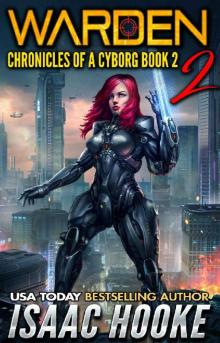 Warden 2
Warden 2 Devastator
Devastator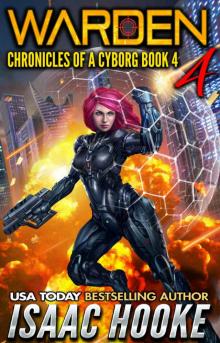 Warden 4
Warden 4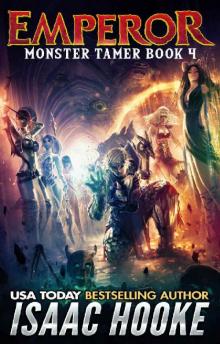 Emperor
Emperor Mech
Mech Conqueror
Conqueror Fighter
Fighter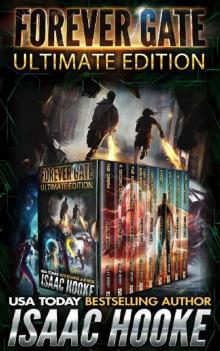 The Forever Gate Ultimate Edition
The Forever Gate Ultimate Edition Defiler
Defiler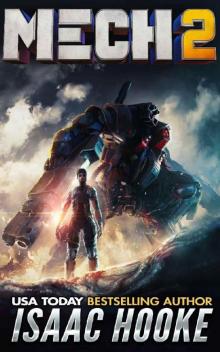 Mech 2
Mech 2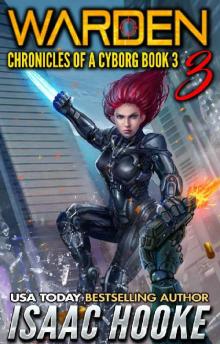 Warden 3
Warden 3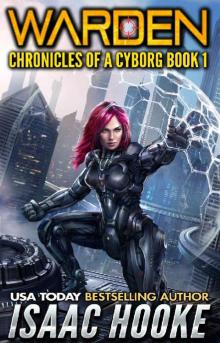 Warden 1
Warden 1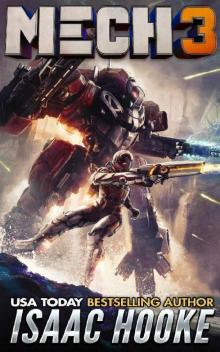 Mech 3
Mech 3 Forerunner
Forerunner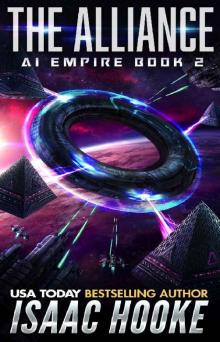 The Alliance (AI Empire Book 2)
The Alliance (AI Empire Book 2)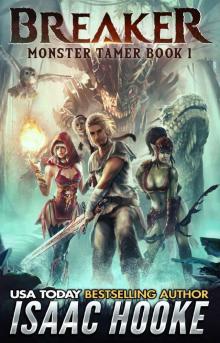 Breaker (Monster Tamer Book 1)
Breaker (Monster Tamer Book 1) Bender of Worlds
Bender of Worlds The Pendulum Swings (The Forever Gate Book 8)
The Pendulum Swings (The Forever Gate Book 8)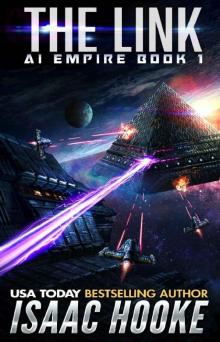 The Link
The Link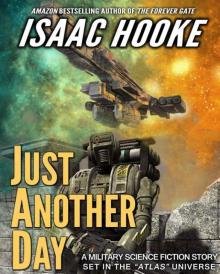 Just Another Day
Just Another Day Star Warrior
Star Warrior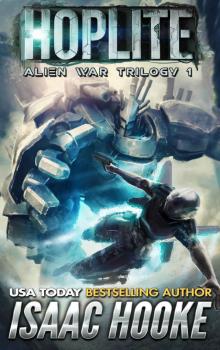 Alien War Trilogy 1: Hoplite
Alien War Trilogy 1: Hoplite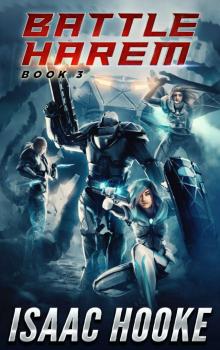 Battle Harem 3
Battle Harem 3 The Ethan Galaal Series: Books 1 - 3
The Ethan Galaal Series: Books 1 - 3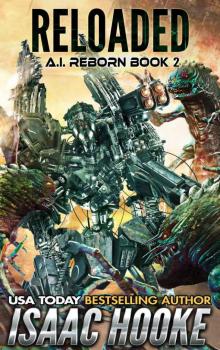 Reloaded
Reloaded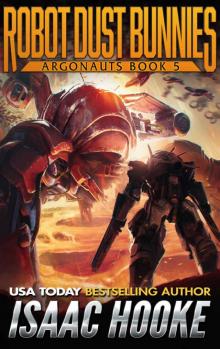 Robot Dust Bunnies (Argonauts Book 5)
Robot Dust Bunnies (Argonauts Book 5) Battle Harem
Battle Harem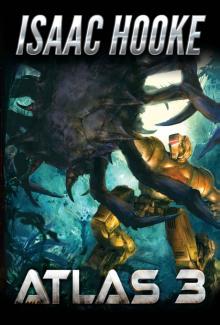 ATLAS 3 (ATLAS Series Book 3)
ATLAS 3 (ATLAS Series Book 3) Argonauts 2: You Are Prey
Argonauts 2: You Are Prey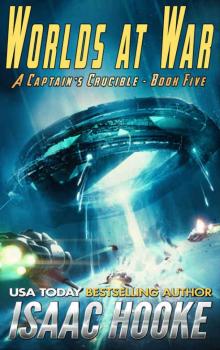 Worlds at War (A Captain's Crucible Book 5)
Worlds at War (A Captain's Crucible Book 5)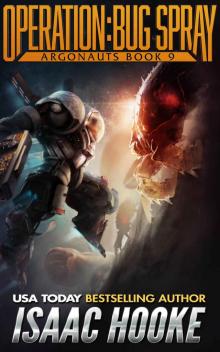 Operation: Bug Spray (Argonauts Book 9)
Operation: Bug Spray (Argonauts Book 9)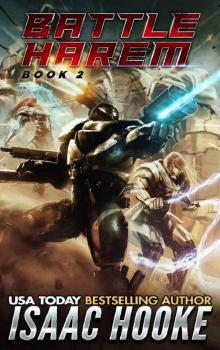 Battle Harem 2
Battle Harem 2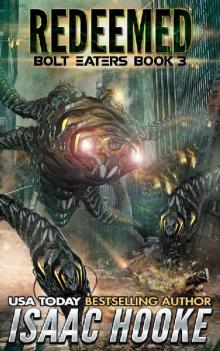 Redeemed (Bolt Eaters Trilogy Book 3)
Redeemed (Bolt Eaters Trilogy Book 3)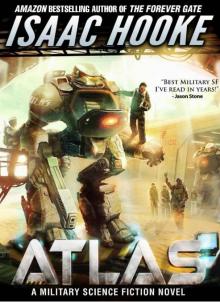 Atlas
Atlas Argonauts 1: Bug Hunt
Argonauts 1: Bug Hunt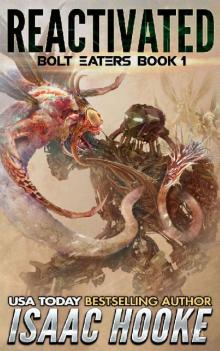 Reactivated (Bolt Eaters Trilogy Book 1)
Reactivated (Bolt Eaters Trilogy Book 1)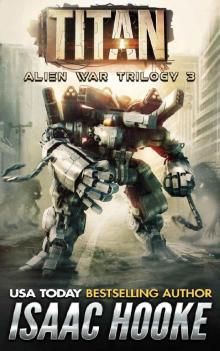 Alien War Trilogy 3: Titan
Alien War Trilogy 3: Titan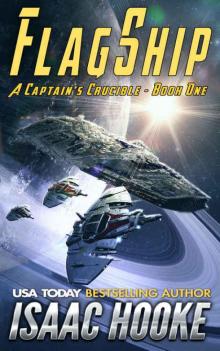 Flagship (A Captain's Crucible #1)
Flagship (A Captain's Crucible #1)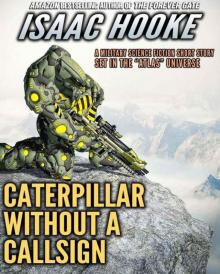 Caterpillar Without A Callsign
Caterpillar Without A Callsign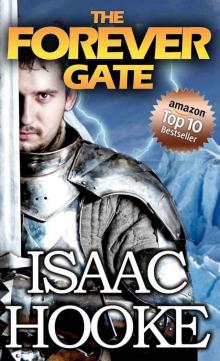 The Forever Gate
The Forever Gate He Who Crosses Death (Star Warrior Quadrilogy Book 3)
He Who Crosses Death (Star Warrior Quadrilogy Book 3)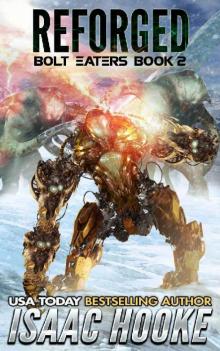 Reforged (Bolt Eaters Trilogy Book 2)
Reforged (Bolt Eaters Trilogy Book 2)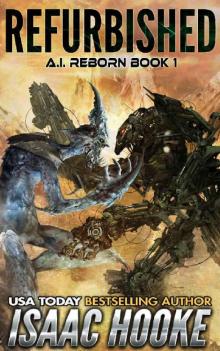 Refurbished
Refurbished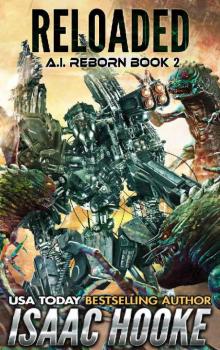 Reloaded (AI Reborn Trilogy Book 2)
Reloaded (AI Reborn Trilogy Book 2) He Who Crosses Death
He Who Crosses Death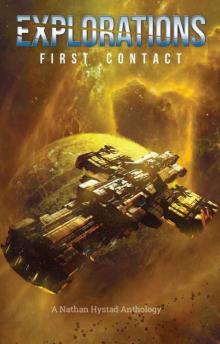 Explorations: First Contact
Explorations: First Contact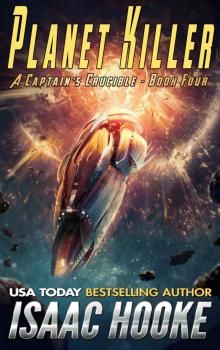 Planet Killer (A Captain's Crucible Book 4)
Planet Killer (A Captain's Crucible Book 4)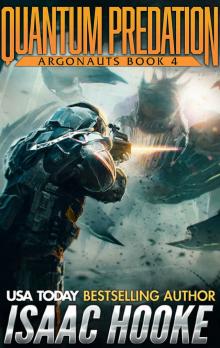 Quantum Predation (Argonauts Book 4)
Quantum Predation (Argonauts Book 4) Clandestine-IsaacHooke-FreeFollowup
Clandestine-IsaacHooke-FreeFollowup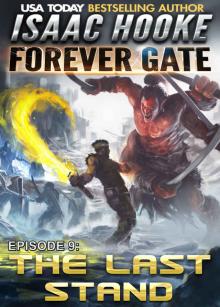 The Last Stand (The Forever Gate Book 9)
The Last Stand (The Forever Gate Book 9)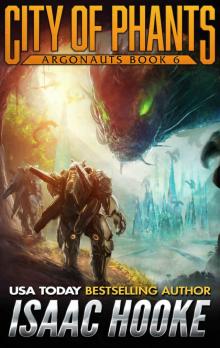 City of Phants (Argonauts Book 6)
City of Phants (Argonauts Book 6) Test of Mettle (A Captain's Crucible Book 2)
Test of Mettle (A Captain's Crucible Book 2)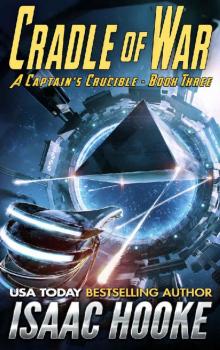 Cradle of War (A Captain's Crucible Book 3)
Cradle of War (A Captain's Crucible Book 3)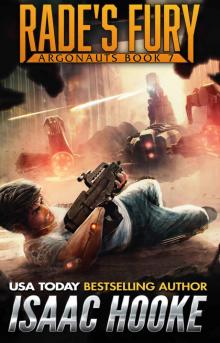 Rade's Fury (Argonauts Book 7)
Rade's Fury (Argonauts Book 7) Rebirth (The Forever Gate Book 6)
Rebirth (The Forever Gate Book 6) The Forever Gate Compendium Edition
The Forever Gate Compendium Edition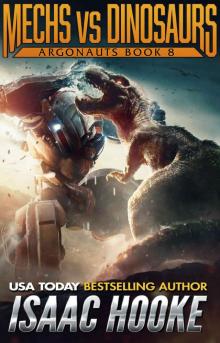 Mechs vs. Dinosaurs (Argonauts Book 8)
Mechs vs. Dinosaurs (Argonauts Book 8)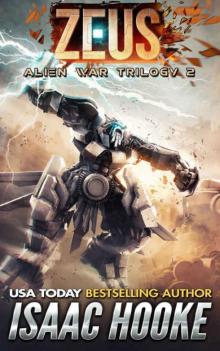 Alien War Trilogy 2: Zeus
Alien War Trilogy 2: Zeus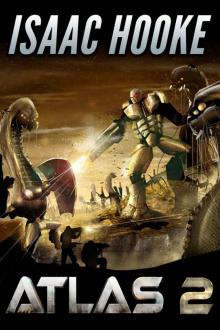 ATLAS 2 (ATLAS Series Book 2)
ATLAS 2 (ATLAS Series Book 2) Operation_Bug Spray
Operation_Bug Spray